“Do or do not. There is no try.” – Yoda
Ol’ Yoda dispensed sage advice, but not for the reasons that amuse most observers. The thing that impresses me is that he included both “do” OR “do not”!
This reminds me of a helpful book by Roger L. Martin, former Dean of the Joseph Rotman School of Business at the University of Toronto: The Opposable Mind: Winning Through Integrative Thinking. Martin argues that the ability to simultaneously (at least, in simulated fashion) hold seemingly opposite positions appears to be one of the magic ninja skills of great business leaders.
(On behalf of the writers of business books, I apologize for their incuriosity towards the rich philosophical traditions that may be underpinning their musings. Insofar as he bases his outlook in part on deep dives into ancient and modern philosophic method, Nassim Nicholas Taleb’s ramblings, cited last week, tend to be more precisely calibrated.)
To jump ahead to one of my PPC advertising examples below: the beginner mind thinks of negative keywords (excluding certain queries from showing your ads at all) in black-or-white fashion: “find the culprits and shoot them.” I prefer to have a chat with the culprits and figure out what to do with them next. The chat hopefully yields some further insights on account strategy – including, of course, asking yourself why are so darn many unsuitable matches popping up in your search query reports in the first place?
In many cases, the only negative consequence of reversing course at will (or thinking two purportedly opposing thoughts at the same time) is what people fear most: having to own the decision, as opposed to shrugging one’s shoulders and blaming “the indisputable formula” for less-than-stellar outcomes.
What goes up, must come down, no? Unless you’ve launched a rocket into space. Some of those things never “come down.”
Great leaps forward always come with risk, uncertainty, and accountability.
Death and taxes: Not so certain after all?
You’ve heard the only two certainties are death and taxes? Anti-aging scientist Dr. David Sinclair has taken issue with the first. He’s got the guts to imagine the unimaginable, something that puts him in the 0.01% of his profession. That we’ll continue to live longer, on average, each decade to come, is a near-certainty, in fact. Sinclair just extrapolates a little more, and as a result, removes the “obvious” ceiling on our life expectancies.
Another indisputable formula – or at least, conventional bootstrapping folk wisdom – suggests that business owners must sacrifice and spray money around if they’re to grow. Borrow money and pay yourself less if necessary! In Profit First: Transform Your Business from a Cash-Eating Monster to a Money-Making Machine, author Mike Michalowicz shows small businesspeople that their businesses are no less likely to grow if they cut out all the pointless spending. Such spending is usually rationalized by “focusing on top-line growth for now.” But when viewed in the cold light of day, many such expenditures are pointless and wasteful. Keeping the entrepreneur too hungry can get in the way of priority-setting, can sap energy levels, and wreck personal lives. Don’t follow their lead – you do you.
The above were just a couple of examples of obvious constraints and trade-offs that have been framed as such in popular wisdom. (You can think of dozens of other one-way conversations that become complicated with more thought or experience, no doubt. Humankind has benefited greatly from antibiotics. But now… their overuse has led to superbugs.) But someone came along and disagreed with the prevailing model, and showed us a new way of approaching the same problem.
Embracing the “What if…” mindset
PPC account execution can’t always be structured like a caveman doctor’s if-then statement: “if find something bad, chop it off.”
We do better if we take a contingent, creative approach to every major decision. And regarding the “something bad,” maybe just put a balm on it.
Indeed that’s one of the beautiful things about Google Ads Campaign Drafts and Experiments: it provides a “non-emphatic” approach to testing marketing hypotheses. How can I possibly know if it’s truly as valuable to spend all this time negativing out supposedly money-losing queries from this campaign? How about letting the campaign run with and without those negative keywords simultaneously? (I would keep the experiment group to 20-25% of the traffic here, especially if you have strong confidence that the negatives are improving ROI.)
Just to whet your appetite, here are two examples of perennial “PPC best practices” that should also be tempered by a “what if?” reckoning.
1. Robust and regular adding of Negative Keywords, or Becoming More Open to Experience?
I think many of us do have the impulse to weed out obviously bad queries on a very frequent basis. But relentless and excessive negativing ultimately leaves you with a smaller overall potential audience. Taken to extremes, you wind up scrabbling for growth later on, overpaying for weak channels that are actually lower-performing than a lot of the query types you weeded out with negatives.
2. Dynamic Keyword Insertion (DKI) in Headline (or body copy): sucker’s game or power tool?
Actually, DKI might (rarely) be a sucker’s game, (sometimes) a power tool, and yet, much of the time – remember, let’s not force needlessly binary analysis on any major decision – it’s neither of those. Oftentimes, it’s simply an unpredictable and potentially useful testing element in your ad creative arsenal. When it comes to the third category, it has dawned on me that DKI is generally underused. It should cost you little to find out if a headline that adjusts dynamically to the user’s query has promise. If not, pause it.
How does DKI work, exactly? These basics are fairly easy to look up (and you’ll need to know them if you’re writing Google certification exams). But we might cover some of that down the road.
When is DKI likely to outperform? Let’s say, in some special case, you’ve decided to go with larger-than-usual ad groups employing a bit of a grab-bag of keywords. Some advantages of doing this are clear: convenience and reach come to mind. Or perhaps the nature of the match types you’ve favored in that ad group is leading to a wide swath of geo-specific queries, or even some “near me’s,” and for whatever reason, the searcher is comforted by seeing those exact keywords in the ad headline. Sometimes it’s just easier to let customization (even rather ersatz customization) just “happen,” rather than questioning its intrinsic virtues. If the numbers tell you it’s working… go with it!
Chances are, it may not work. It could drive up CTR’s and drive down Conversion Rates due to what Jakob Nielsen referred to as “deceptively strong information scent.”
Responsive Search Ads (RSA’s) offer a brilliant environment for testing the impact of a DKI headline at scale. There’s nothing wrong with throwing one or two into the mix (you can test upwards of 10 headlines in a RSA) to see if it leads to better results. (If you use a large number of headlines in the test, the system is supposed to pick the winners, anyway.)
Try This At Home
When it comes to negative keywords and DKI, along with numerous other slick features in PPC platforms, you don’t need to be thinking all “do this, do that,” but rather “try this & that.” Armed with a decent grasp of what “trying this & that” entails, and why it may resonate with users, your accounts could approach escape velocity. Your career longevity might even turn out to be “forever.”
Next week, I’ll extend this conversation by tackling a core principle of search marketing: the holy grail of relevance.
Read Part 15: The Holy Grail of Extreme PPC Ad Relevance